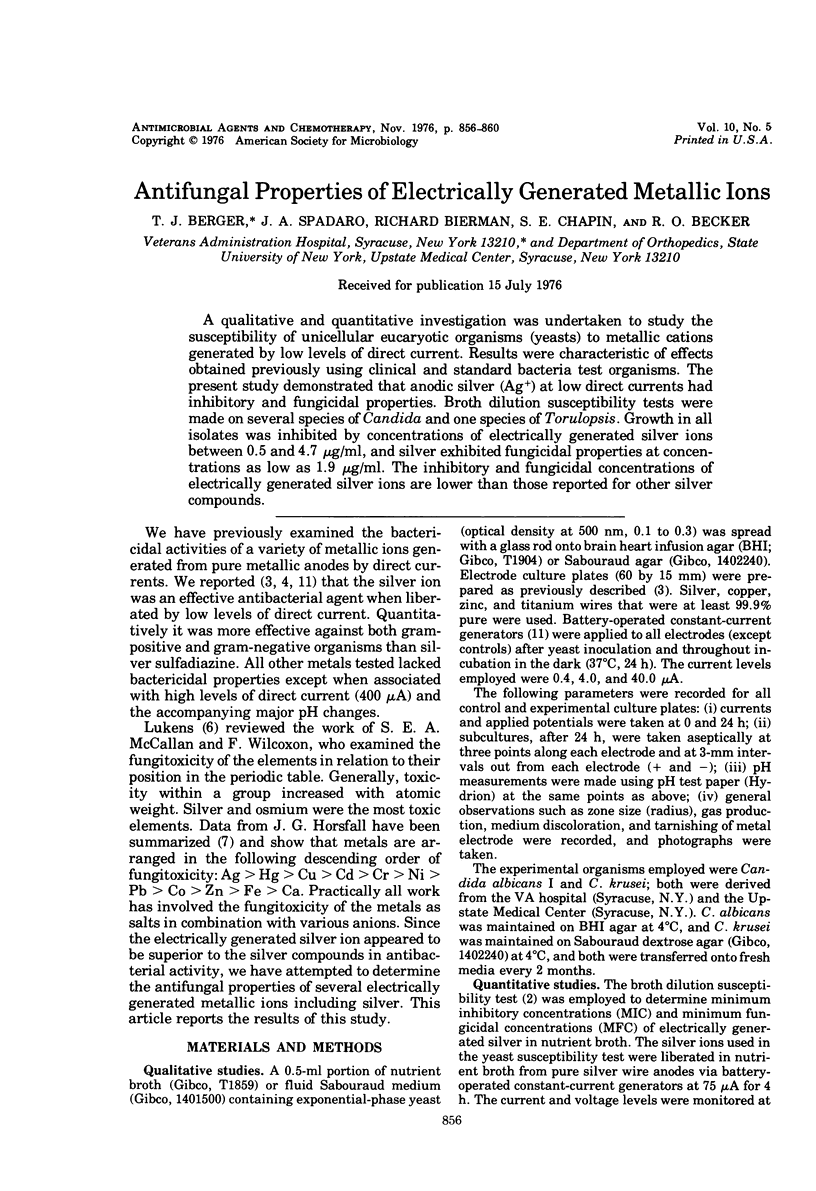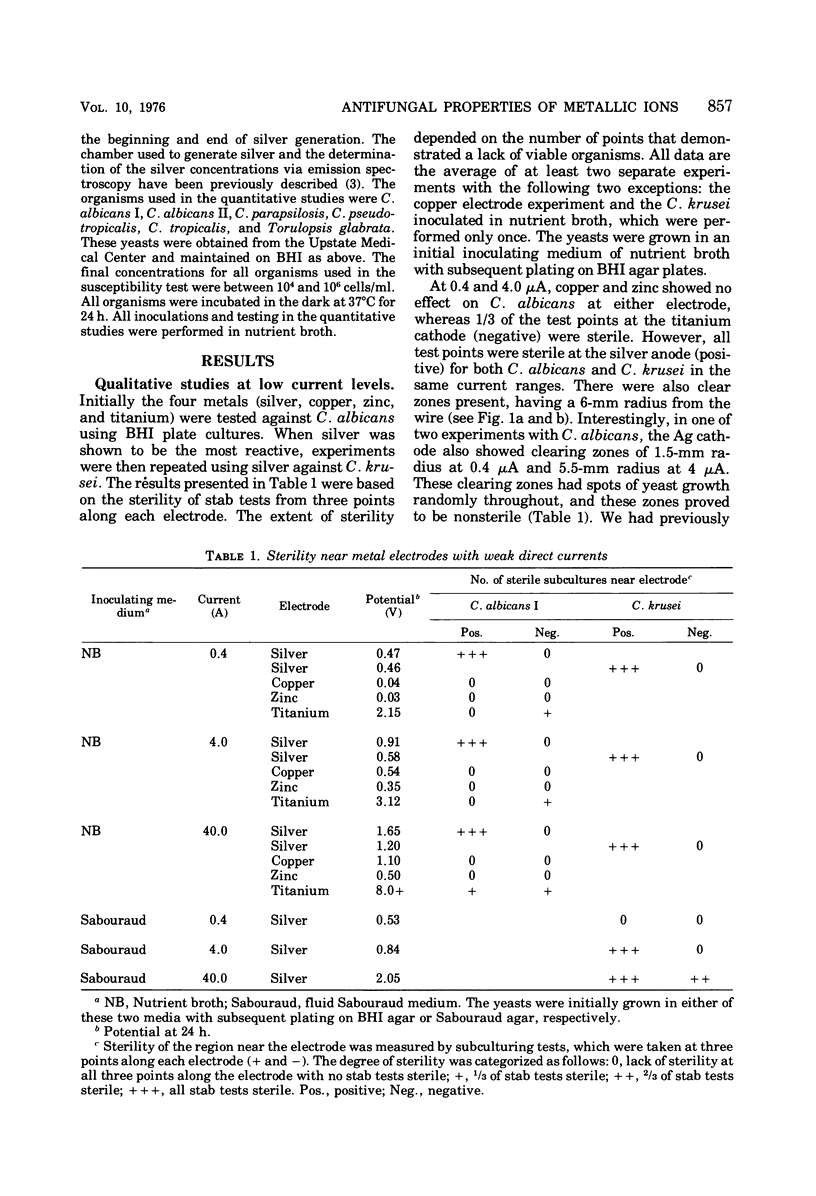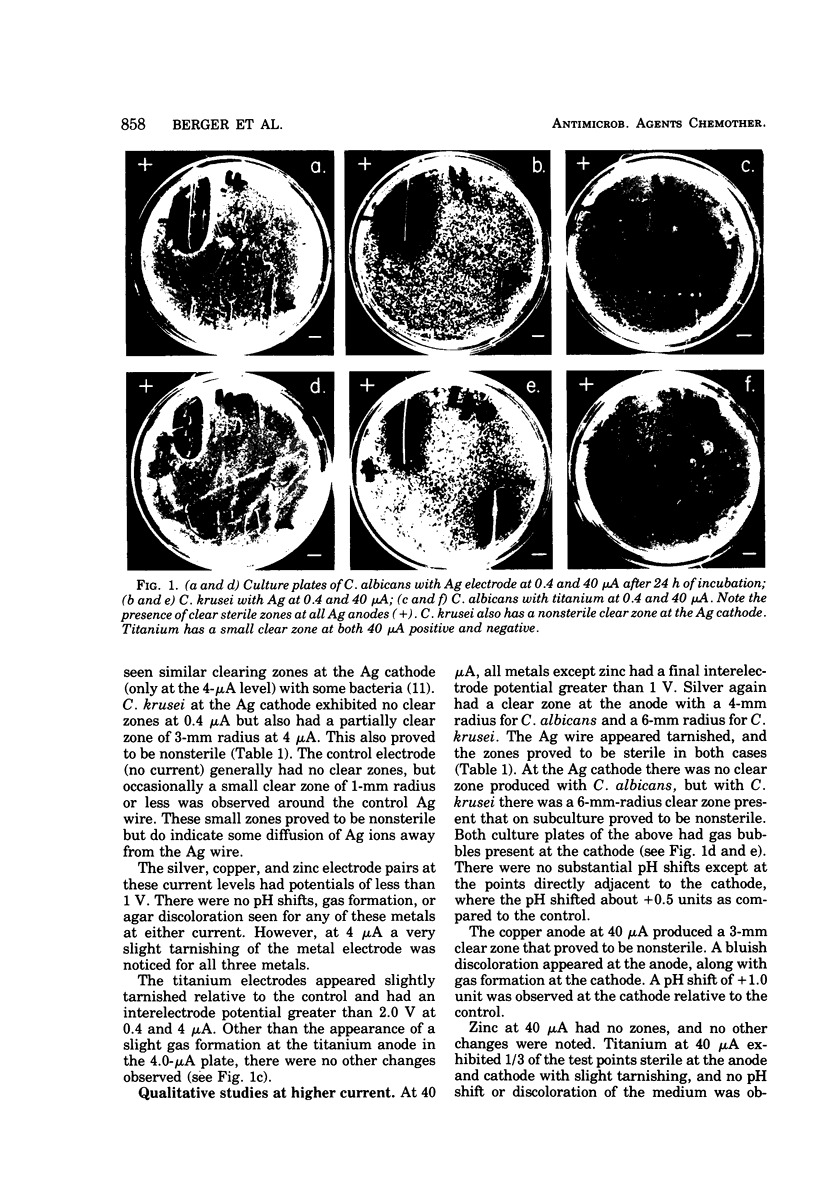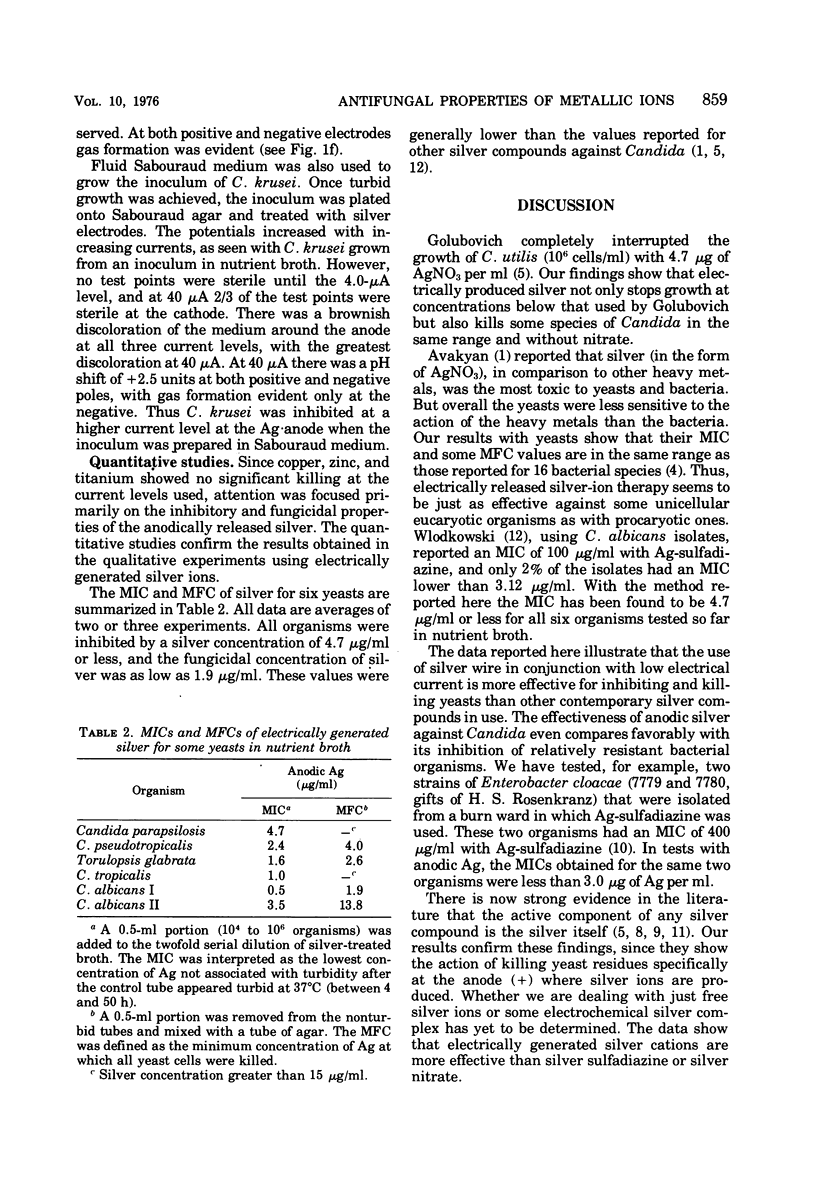Abstract
A qualitative and quantitative investigation was undertaken to study the susceptibility of unicellular eucaryotic organisms (yeasts) to metallic cations generated by low levels of direct current. Results were characteristic of effects obtained previously using clinical and standard bacteria test organisms. The present study demonstrated that anodic silver (Ag+) at low direct currents had inhibitory and fungicidal properties. Broth dilution susceptibility tests were made on several species of Candida and one species of Torulopsis. Growth in all isolates was inhibited by concentrations of electrically generated silver ions between 0.5 and 4.7 μg/ml, and silver exhibited fungicidal properties at concentrations as low as 1.9 μg/ml. The inhibitory and fungicidal concentrations of electrically generated silver ions are lower than those reported for other silver compounds.
Full text
PDF




Images in this article
Selected References
These references are in PubMed. This may not be the complete list of references from this article.
- Barranco S. D., Spadaro J. A., Berger T. J., Becker R. O. In vitro effect of weak direct current on Staphylococcus aureus. Clin Orthop Relat Res. 1974 May;(100):250–255. [PubMed] [Google Scholar]
- Berger T. J., Spadaro J. A., Chapin S. E., Becker R. O. Electrically generated silver ions: quantitative effects on bacterial and mammalian cells. Antimicrob Agents Chemother. 1976 Feb;9(2):357–358. doi: 10.1128/aac.9.2.357. [DOI] [PMC free article] [PubMed] [Google Scholar]
- Modak S. M., Fox C. L., Jr Binding of silver sulfadiazine to the cellular components of Pseudomonas aeruginosa. Biochem Pharmacol. 1973 Oct 1;22(19):2391–2404. doi: 10.1016/0006-2952(73)90341-9. [DOI] [PubMed] [Google Scholar]
- Rosenkranz H. S., Carr H. S. Silver sulfadiazine: effect on the growth and metabolism of bacteria. Antimicrob Agents Chemother. 1972 Nov;2(5):367–372. doi: 10.1128/aac.2.5.367. [DOI] [PMC free article] [PubMed] [Google Scholar]
- Rosenkranz H. S., Coward J. E., Wlodkowski T. J., Carr H. S. Properties of silver sulfadiazine-resistant Enterobacter cloacae. Antimicrob Agents Chemother. 1974 Feb;5(2):199–201. doi: 10.1128/aac.5.2.199. [DOI] [PMC free article] [PubMed] [Google Scholar]
- Spadaro J. A., Berger T. J., Barranco S. D., Chapin S. E., Becker R. O. Antibacterial effects of silver electrodes with weak direct current. Antimicrob Agents Chemother. 1974 Nov;6(5):637–642. doi: 10.1128/aac.6.5.637. [DOI] [PMC free article] [PubMed] [Google Scholar]
- Wlodkowski T. J., Rosenkranz H. S. Antifungal activity of silver sulphadiazine. Lancet. 1973 Sep 29;2(7831):739–740. doi: 10.1016/s0140-6736(73)92576-2. [DOI] [PubMed] [Google Scholar]



